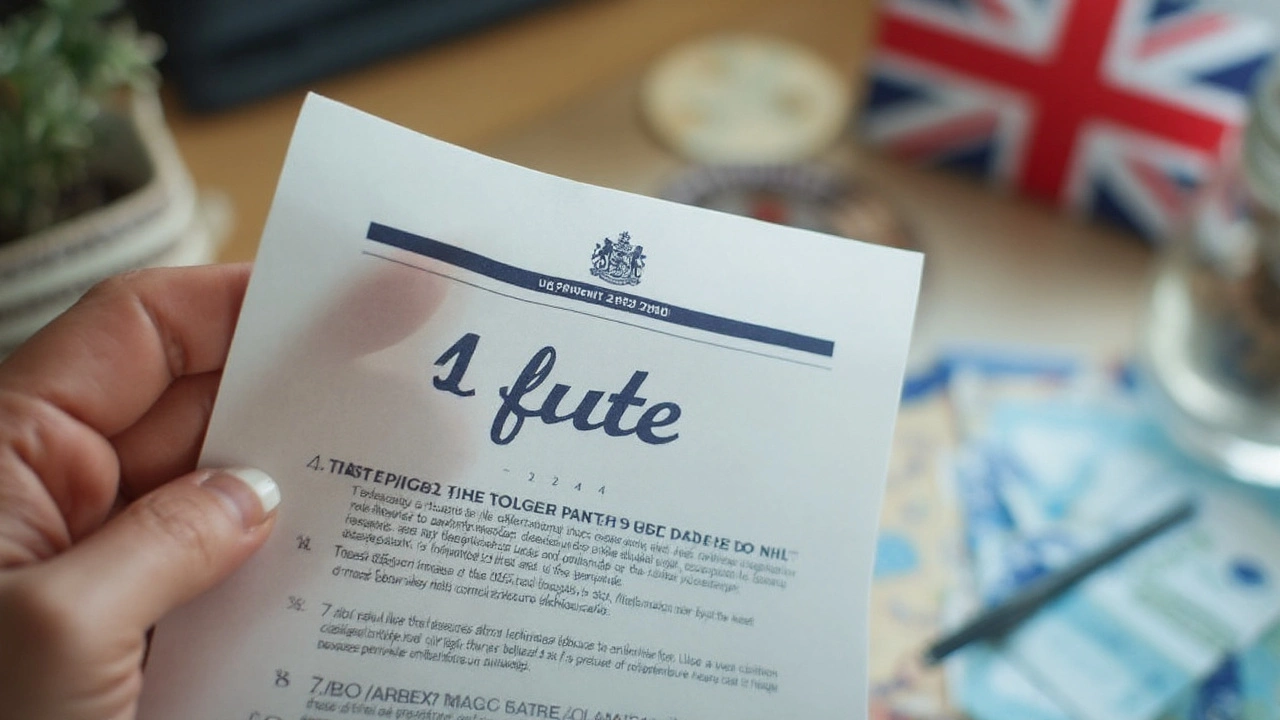You probably spotted headlines or TikToks saying, “No, student loans aren’t due till 2024.” For anyone juggling studies, jobs, or just trying to adult, that sounds tempting—a year (or more!) of breathing space. But what’s the real story? Is there actually a magical pause button or is it just wishful thinking? Rumors fly when it comes to student loans. The rules kept changing, and it’s honestly no wonder the details got blurry for so many people. People are so confused that many think their loans can just sit until 2024 or later, untouched, without any penalty. I’ll break down what really happened, why it happened, and what it means for you right now.
Why Did Everyone Think Student Loans Weren’t Due Until 2024?
Back in March 2020, nobody knew life was about to get turned upside-down. COVID-19 hit, the economy faltered, and the U.S. government hit pause on most federal student loan payments. This payment pause, or forbearance, froze loan payments and slashed interest rates down to 0% for over 40 million borrowers. It was supposed to be a temporary thing, but the government extended the pause several times as the pandemic dragged on. Then, at the end of 2022, President Biden’s administration again extended the moratorium, announcing that payments could resume after June 30, 2023—or 60 days after the Supreme Court ruled on student debt cancellation, whichever came first. So why were so many people asking, “Are student loans not due until 2024?”
Social media played a role. Influencers, news outlets, and memes all pointed at the possibility (or hope) that repayments wouldn’t start up again until 2024 or beyond. Some misread the fine print, others went by what their friends said. And honestly, when you’re drowning in emails from loan servicers, who can blame you for losing track? Loans did restart, but those rumors stuck. For folks who had never paid a cent before, or who got used to monthly auto-debits at zero dollars, it felt almost too good to be true. And—spoiler—it was.
Fast-forward to August 2025, and federal student loan payments have been back for nearly a year. But the aftershocks of that long freeze are still being felt. Now, some students are piecing things together for the first time: “Wait, did my loans come due last fall? Was there a late-fee-free period? Was that just a one-time thing?” Yep, it’s confusing. But here’s what actually happened (and what didn’t):
| Pause Dates | What Happened | Interest Rate |
|---|---|---|
| March 2020 - Sep 2023 | Payments paused Interest set to 0% | 0% |
| Oct 2023 | Payments resumed Interest accruing | Normal interest resumed |
So no, unless you got a special forbearance or deferment, your student loan due dates didn’t magically push all the way to the end of 2024. The federal freeze is over. Now, you’re living in the new rules.
What’s Happened Since Repayments Kicked Back In?
Once the payment pause ended, millions had to dust off their budgets and figure out how to squeeze those monthly student loan bills back in. All federal loan payments officially resumed in October 2023. Suddenly, the questions shifted from, “When do I have to pay?” to “How do I do this?” For some, it was their first payment ever, thanks to graduating during the pause. For others, it felt like déjà vu back to 2019—except prices for rent, gas, eggs, and everything else had soared.
The return didn’t come with a snapback to harsh penalties right away. The Department of Education launched a temporary “on-ramp” through September 2024. This program meant no late fees or default marks for missed payments during that time—a safety net for those who just couldn’t manage right away. But interest still ticked up each month. If you skipped a payment, that interest didn’t just vanish; it quietly stacked up, making your balance higher when you finally resumed paying. Kind of like when you forget about your gym membership for a few months and discover you owe a heap thanks to those “maintenance fees”—only bigger, and messier.
Borrowers who logged into their accounts last fall found a lot had changed. New loan servicers had popped up (many companies swapped contracts with the DOE during the pandemic), which meant new account websites and fresh rounds of password resets for almost everyone. Some folks weren’t even sure who to repay anymore. Others faced broken auto-pay setups or missing loan balances. If you got lost, you’re not alone. Loan servicing in America is rocky, with new errors reported almost every week since payments resumed.
One thing everyone asked: “Is there any forgiveness coming my way?” Biden’s student loan cancellation plan was struck down by the Supreme Court in June 2023, but targeted, smaller cancellations have helped a few groups. About 5 million had their loans erased, mainly through improvements to Public Service Loan Forgiveness (PSLF), settlements for people scammed by certain for-profit schools, and fixes for income-driven repayment (IDR) plans, but for the rest—it’s back to monthly payments.

So, When Exactly Are Student Loans Due Now?
If you have a federal student loan, your payment due date depends on the type of loan, your individual repayment plan, and your loan servicer. Most federal loans come due on the same date every month, usually about 30 days after the previous bill. Private loans are…well, a different zoo. Every private lender sets its own rules, interest rates, and forbearance terms.
Here’s what matters for federal loans: As of August 2025, the payment pause is long over. The last big “safe zone” was the on-ramp period, ending September 2024. After that, missing payments can trigger late fees, collections, and even a hit to your credit. There’s no longer any automatic forbearance, and interest is active. It’s up to you to check your account, confirm your servicer, and make that monthly payment (even if you set up auto-pay, check your email for updates, just to be safe).
Some people confuse loan types—federal Direct Loans, FFEL loans, Perkins loans, plus private loans all have different rules. The big federal pause only covered Department of Education-held loans. If you refinanced to private loans during the pandemic, sorry—those payments never paused. That’s a tough pill, since some borrowers thought the freeze was universal. Lesson learned: check your paperwork, and know what type of loan you have.
And if you haven’t heard from your servicer in months? It’s your responsibility to track your loans. Log in to studentaid.gov, which has your full federal loan data. If your loans have been transferred (and many were!), studentaid.gov tells you your current loan servicer. Always update your email and address there. Missing an update could mean missing a critical payment reminder—and hefty fees later.
| Loan Type | Servicer | Repayment Due Each Month |
|---|---|---|
| Federal Direct Loan | Varies | Yes |
| Private Loan | Varies | Depends on Lender |
Smart Ways to Handle Your Student Loan Payments Now
So you know payments are due now. Yeah, it stings. But you’ve got ways to soften the blow. Don’t just cross your fingers and hope for another pause—the rules now demand action, not hope. Here’s how real people are managing their federal loan payments in 2025, and some tips you can actually use.
- Income-Driven Repayment (IDR) Plans: If your payments look huge compared to your paycheck, you might qualify for a lower payment based on income and family size. The new SAVE Plan, rolled out in 2023, is especially generous. Some borrowers saw payments slashed to $0/month for a year or more. Not sure? Apply through studentaid.gov.
- Grace for Delays: If your wallet’s empty, don’t ghost your servicer. Ask about deferment or forbearance—though interest can still pile up, it beats defaulting. Most federal loans let you pause payments for up to 36 months in a lifetime for hardship, unemployment, or military service.
- Refinancing (with caution): If your income’s solid and you have good credit, refinancing with a private lender could cut your interest. Just know: you give up federal benefits like forgiveness, deferment, and IDR. Once you privatize, there’s no going back.
- Public Service Loan Forgiveness (PSLF): Working in public service or teaching? Forty payments and you could qualify to erase the rest. But check the PSLF help tool on studentaid.gov to see if your employer and loan qualify.
- Track Everything: Use spreadsheets or free loan tracking apps. The more loan types and servicers you have, the easier it is for details to slip through the cracks. I live by Google Calendar alerts. Whatever works, just make sure you never forget a payment.
Here’s an interesting stat: In early 2024, more than 3 million borrowers missed their first payment after the freeze. Many just didn’t know payments had resumed, which tells you how bad communication between servicers and students is. If you’re late, don’t panic—the on-ramp program may help, and a quick call to your servicer almost always gets you more options than you think.

Where Can You Get Help If You’re Struggling?
Nobody wants to end up in default. It tanks your credit score, makes your loan balance tofu-balloon, and can even trigger wage garnishment. A little hustle now can save you a ton of grief. So, where do you turn if the numbers just don’t add up?
First, always start at studentaid.gov. It’s way more user-friendly now than pre-2020 and includes links to your servicer, payment calculators, and forgiveness program details. For free, real-life help, nonprofit credit counseling agencies can walk you through budgeting and direct you to repayment plans that fit. Local community colleges, student associations, and even some public libraries host loan workshops. Don’t just trust loan advice you see on social media. Many “debt settlement” companies are outright scams—they’ll charge you for stuff you can do free yourself.
If you have a complaint (like your servicer loses your payment or gives you wrong info), file a report with the Consumer Financial Protection Bureau (CFPB). The CFPB’s student loan ombudsman actually gets results—many borrowers see issues fixed within weeks. And if your income is way down, revisit IDR or deferment. You’re never “locked in”—you can update your plan every year or if your pay drops suddenly.
If you’re in default—meaning you missed 270 days’ worth of payments—there are “fresh start” programs that let you get back in good standing. But act fast: interest, fees, and collection tricks make it harder the longer you wait.
Pep talk: Don’t ignore this. It’s a headache, sure, but each call, click, and payment brings you one step closer to freedom from debt. There are actual people out there who paid off five-figure loans making less than $40k a year. It’s doable, even if it feels like slogging through mud (wearing flip-flops, in the rain, uphill both ways, for years). Ask for help when you need it, document every call or email, and never stop advocating for your own finances. Your future-self will thank you.
